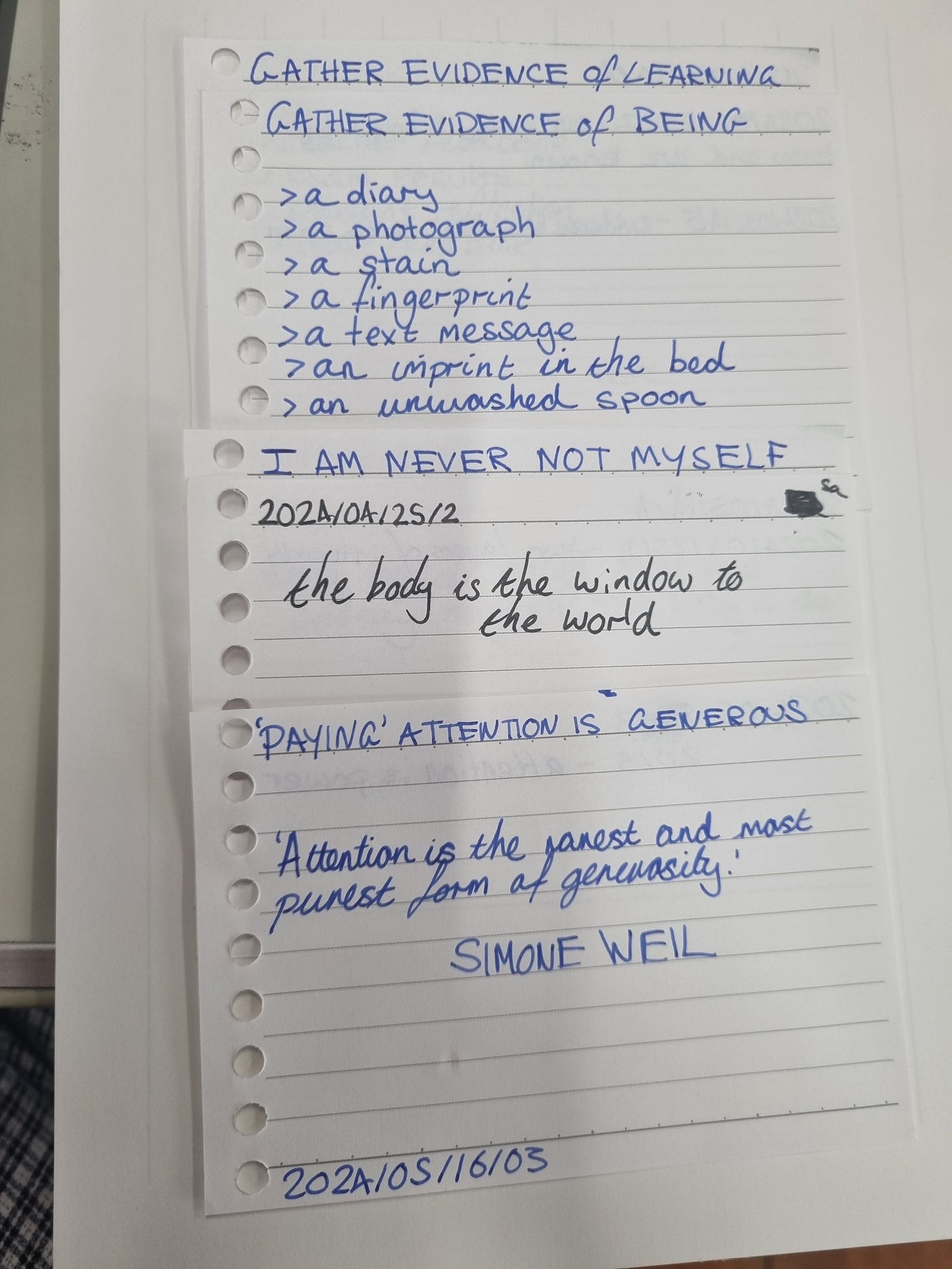can you use a zettelkasten to write a poem?
experimenting with a knowledge-management system to write poetry
A zettelkasten is a knowledge-management system based on index cards - originally physical, now often digital. It was invented by Niklas Luhmann, and has been modified and reimagined many times, and there is loads of information on the zettelkasten website, linked here.
Essentially, it’s a way of reducing information down to the smallest possible component, and then freeing those thoughts from the linear system of a notebook, allowing the user to create more links between seemingly seperate thoughts and ideas. This is how new information is created, and in fact you can actually write directly from your zettelkasten cards, skipping the initial draft and many parts of the traditional essay-writing planning. The linking process is something that ADHD brains are said to be naturally better at, and yet the original ZK system is overwhelming and sometimes unmanageable to those of us with ADHD. In the comments of this excellent post on the zettelkasten by Jillian Hess, I shared some rather rambling ways of making it work, which I will probably expand upon in a better post later.
However, it reminded me that in last week’s Writing for Guidance (as part of Cody’s new Living the Artist’s Way Book Club) I was told I should use the ZK to make a poem.
I’d already noticed that my brain was making lots of connections between different notes that weren’t necessarily of use from a purely informational standpoint. My ADHD was running wild as I looked through my cards, noting similarities and contrasts between phrases, alliteration, half-rhymes and interesting images. In fact, I’d even scribbled down a poem of sorts on a card itself, inspired by the title I’d given a card. (It was initially intended to be a serious list of ways to gather evidence of being.) But I wanted to play with adding other cards to that poem, exactly how you’d begin to write an essay. But the fun part of creative writing is the ability to mess with form and construction, to be more experimental.
Something I’ve been thinking about in terms of physical art recently is ‘the hand of the artist’. This is not the same thing as the voice of the artist, but whether and how they show their hand is part of their voice. (Again, probably something I will circle back to when my brain fog is not so severe.) It’s the presence of visible brushstrokes in a painting, uneven stitches in a quilt, the wobbliness of a hand-thrown pot. It’s what differentiates something as being made by a human, rather than by machine, or by committee/factory line, as in the case of a product. It’s easy to point to the voice of a writer, to their choices, but can you see the hand of a writer?
In this poem, you can see not only my handwriting, but the way that I think, how I gather and collect my thoughts, my exact references. The things my brain links in their rawest, simplest form. Is this hand? Or does it have too many choices involved, thereby making it voice?
GATHER EVIDENCE OF LEARNING
GATHER EVIDENCE OF BEING
a diary
a photograph
a stain
a fingerprint
a text message
an imprint in the bed
an unwashed spoon
I AM NEVER NOT MYSELF
the body is the window to the world
‘PAYING’ ATTENTION IS GENEROUS
‘Attention is the rarest and most purest form of generosity.’ - Simone Weil
(Transcription note: there are dates on the cards that I have not transcribed as they are references for the Zettelkasten, and not part of the meaningful part of the poem)
Do you use a Zettelkasten? Have you ever made a poem or other writing from notes? How do you show your ‘hand of the writer’?


This is such an interesting approach and system - one I’ve never heard of. The snippets on your cards definitely capture ‘something’ and I would love to see anything else you produce this way!